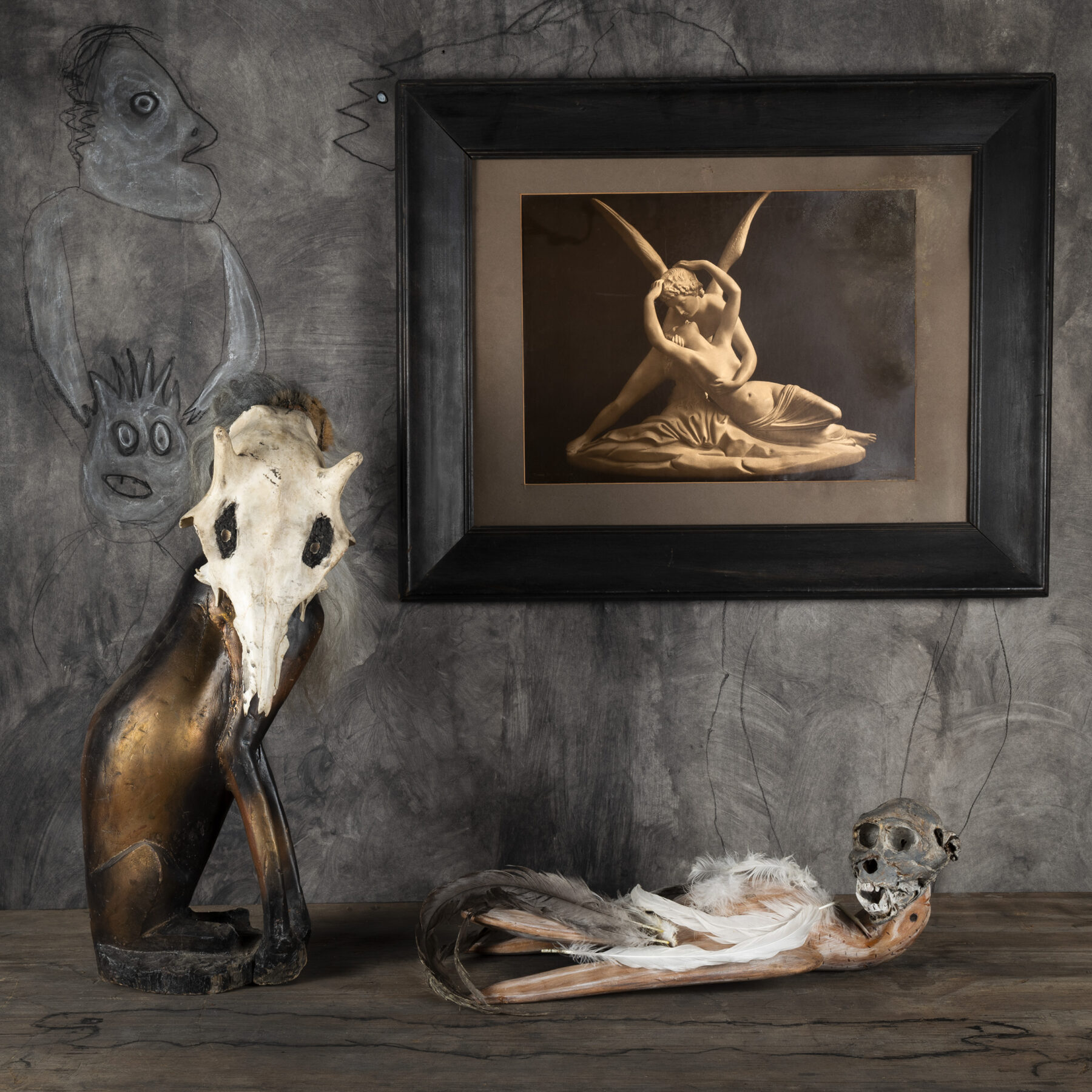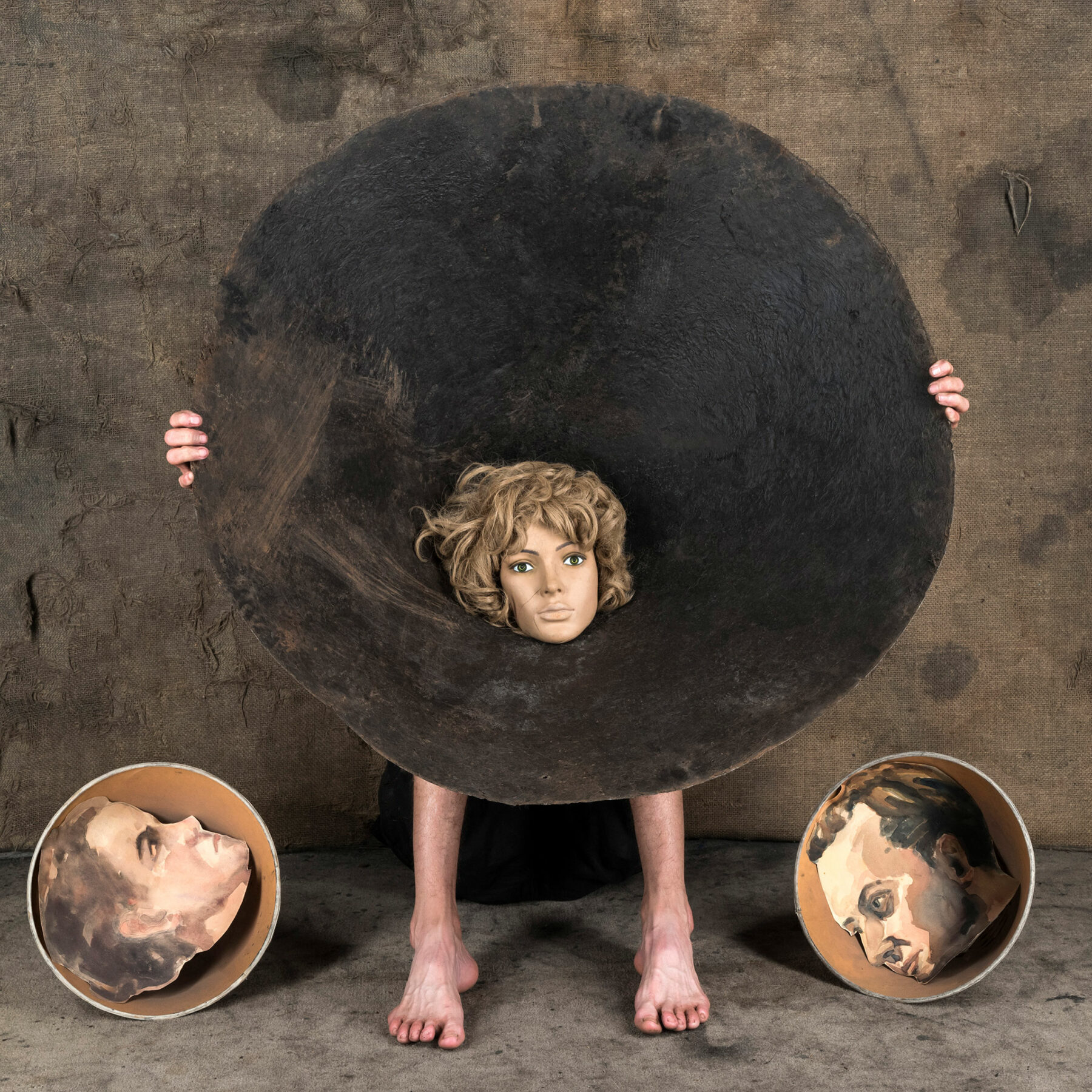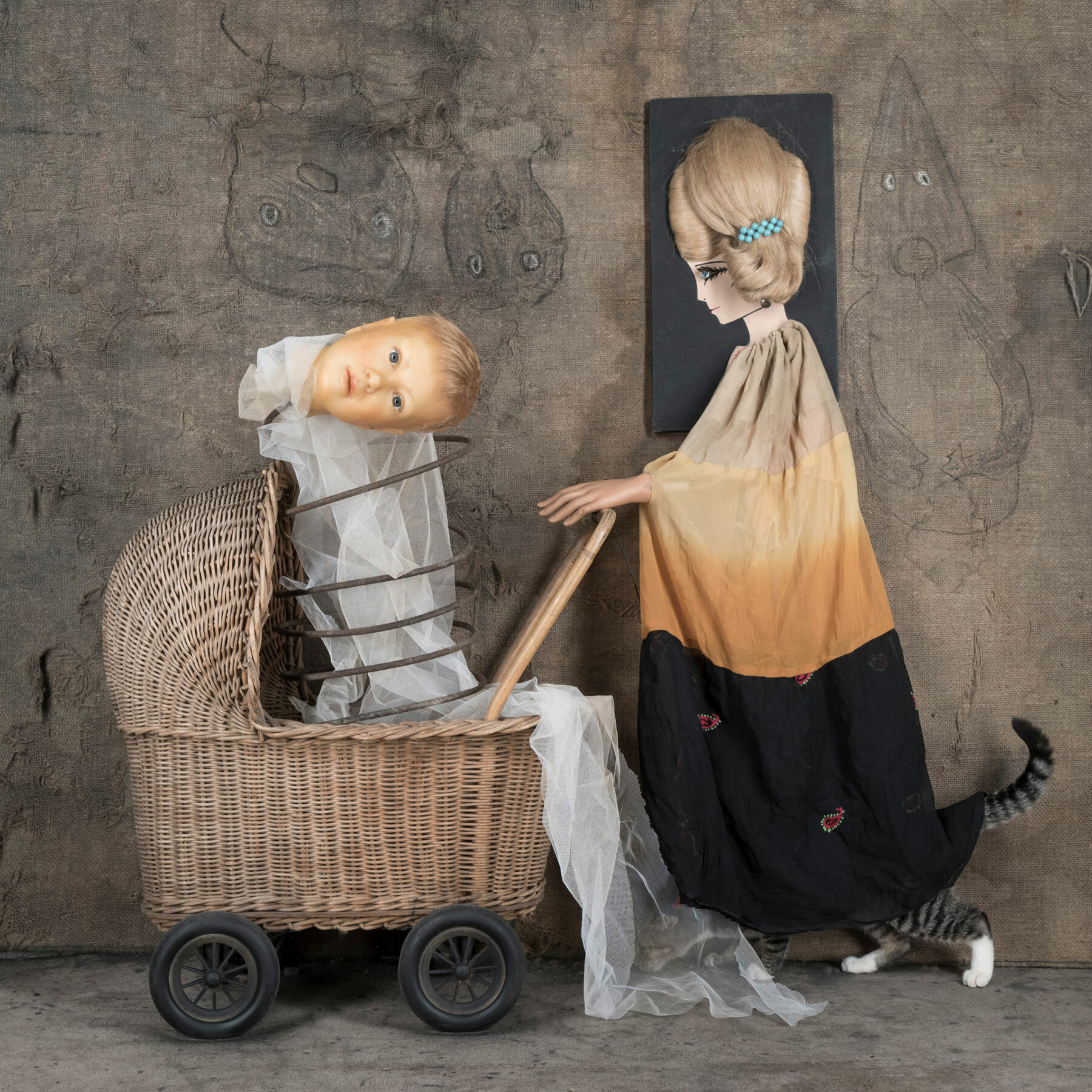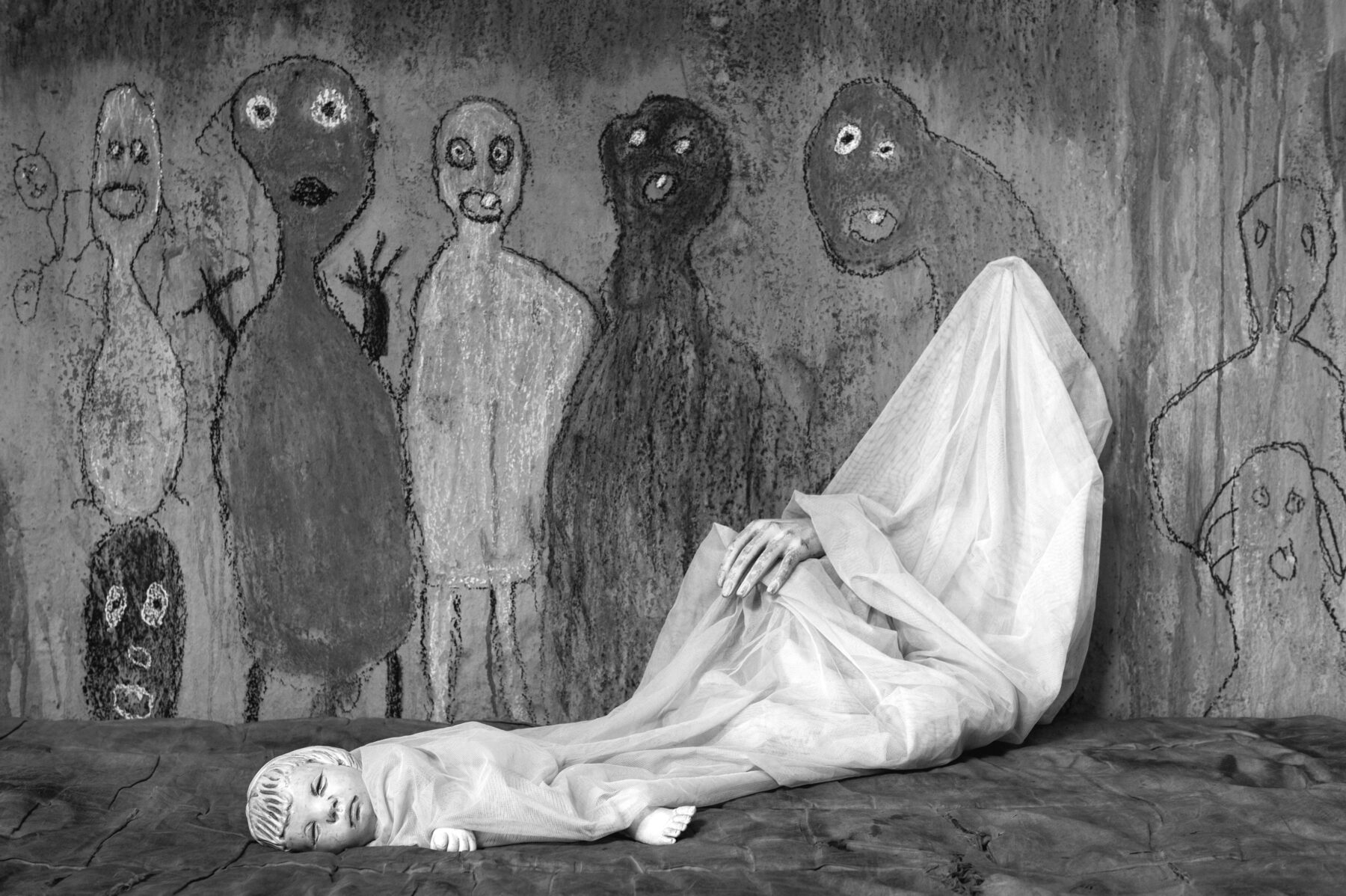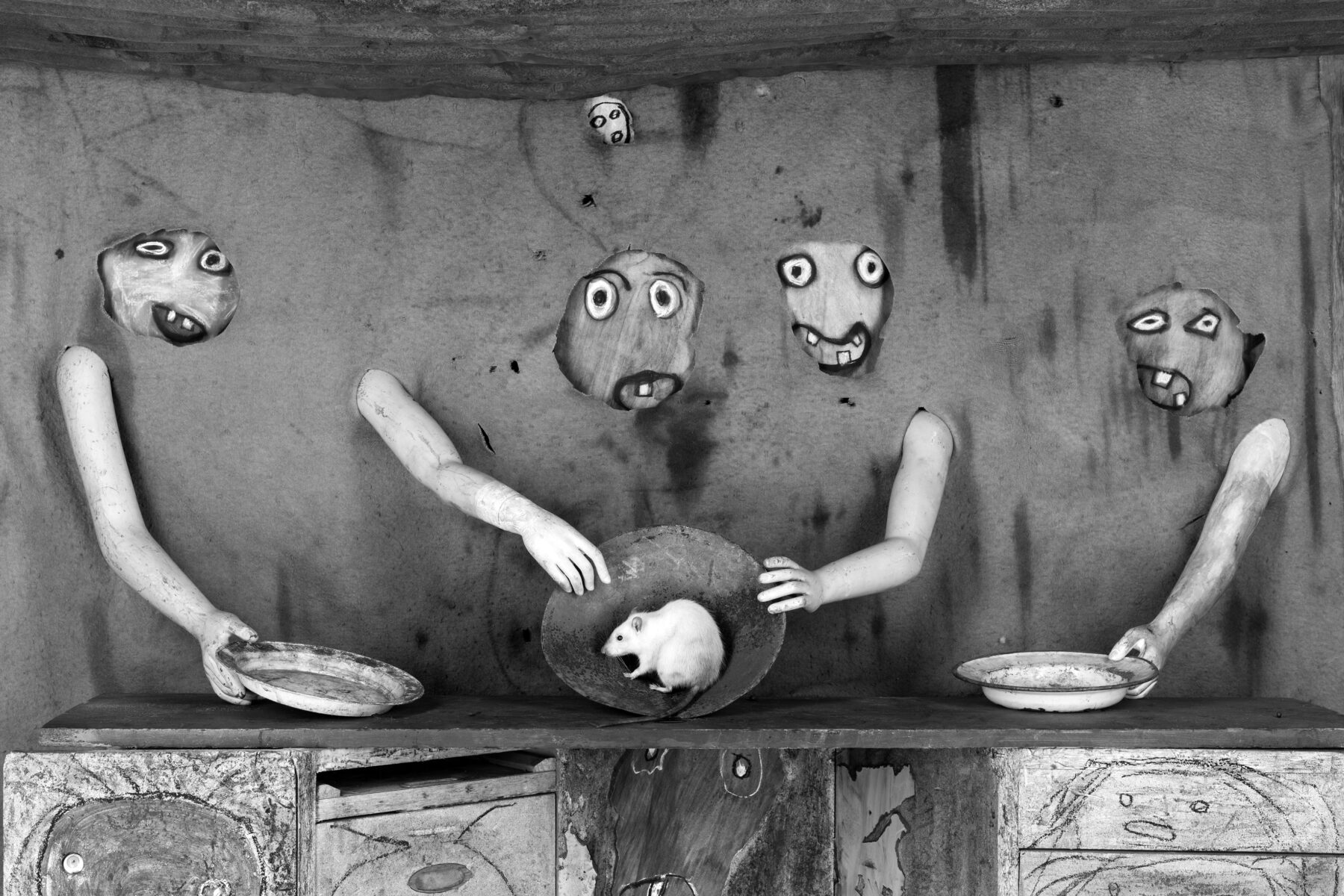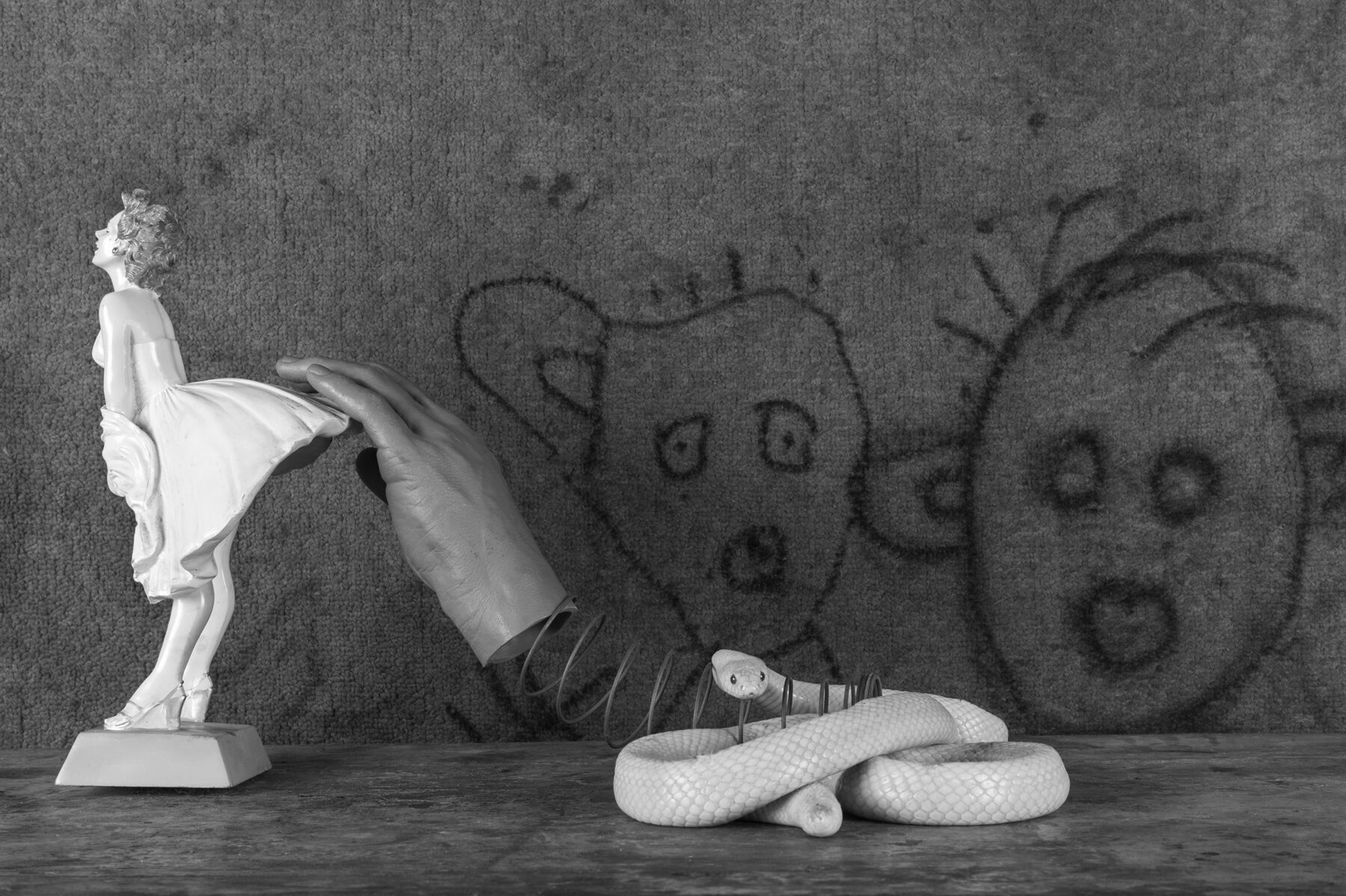Some photographers spend their life’s work capturing their external environment. Others turn inward to construct and visualize the personal workings of their consciousness, shaping alternative worlds in front of their lens.
No other twenty first century photographer is as consistently committed to visualizing the shadowy realms of the mind as Roger Ballen. Throughout his career the psychological images he creates have embodied an aesthetic that we now unflinchingly refer to as Ballenesque. Born in NYC in 1950, Ballen moved to Johannesburg 30 years ago, and has spent much of his career working with the photographic medium to create images, books, and immersive installations that question the human condition.
Often characterized as dark and chaotic, Ballen’s photographs reveal that no one is free from the possibilities of pandemonium. But, contrary to popular interpretation, this isn’t meant to be a depressing realization; it’s meant to be one of liberation, inviting human beings to understand the restrictive structures that are imposed on us—as well as the ones that we impose on ourselves. At his Johannesburg home, Ballen speaks about the unyielding determination behind his concepts, the psychological and physical steps in his creative process, and what he hopes viewers take away from his riveting body of work.
This profile is part of Visually Speaking, our four-part content series with photography platform Unseen. The series delves into the personal histories of four established photographers, exploring their creative practices and socio-political contexts.
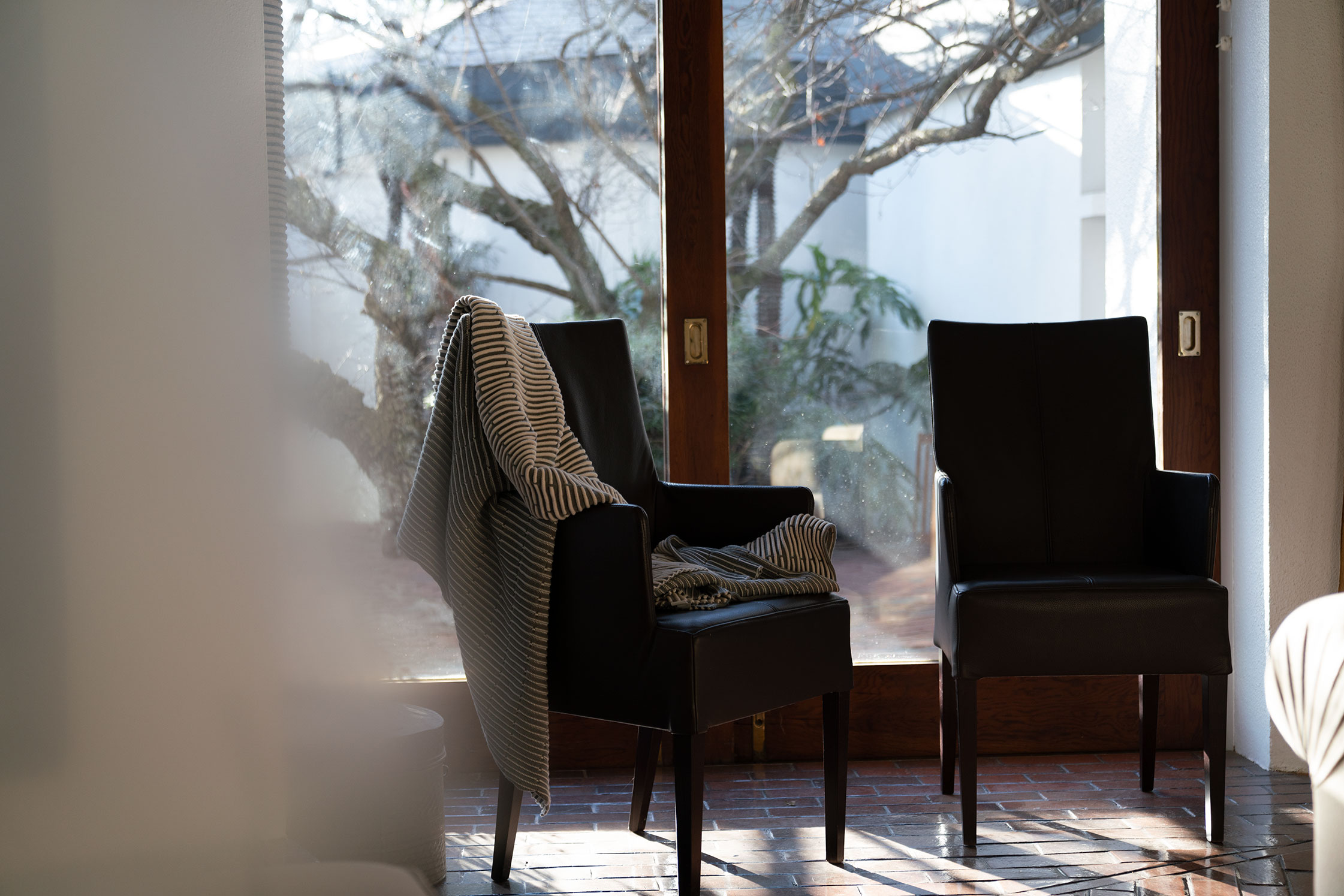
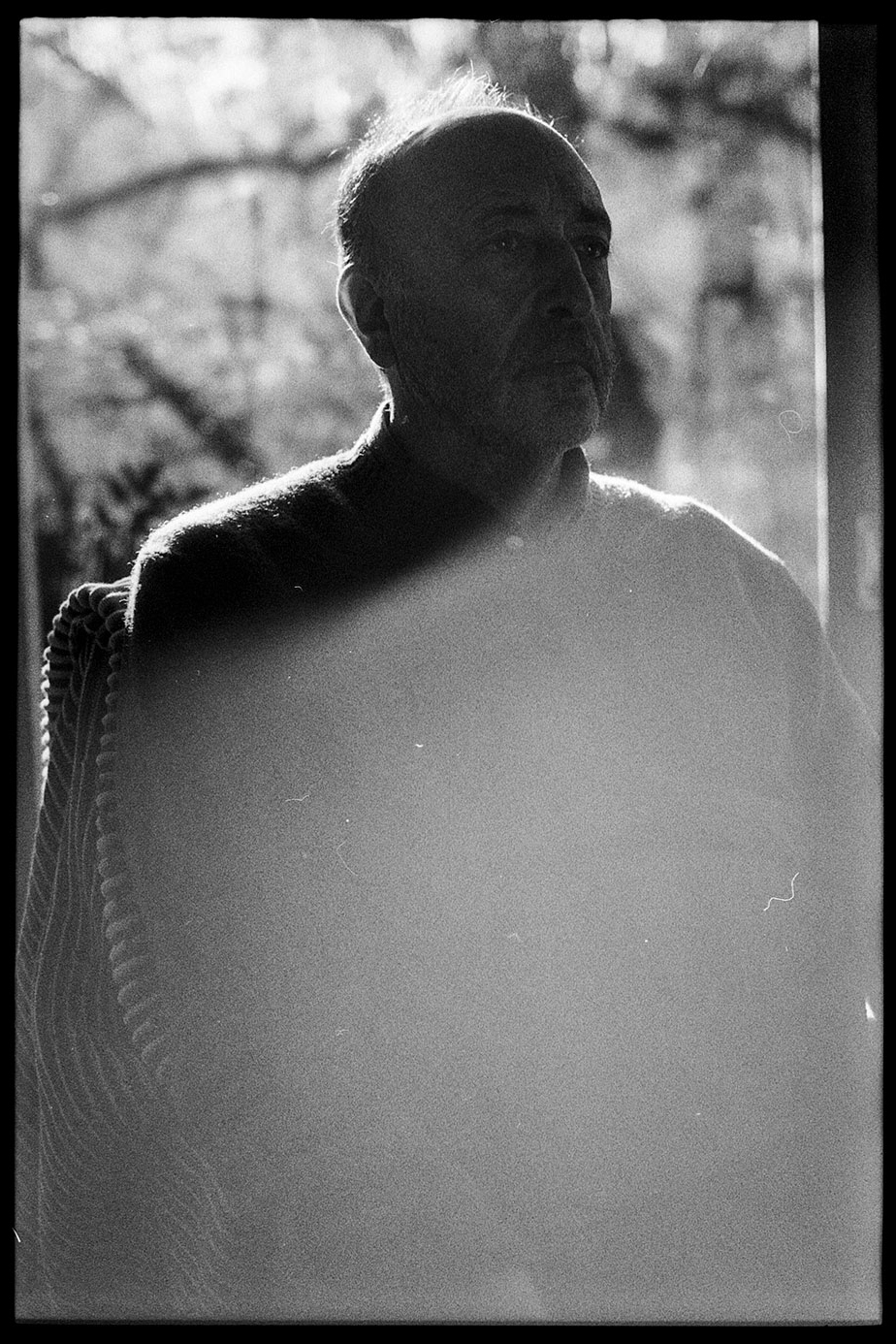
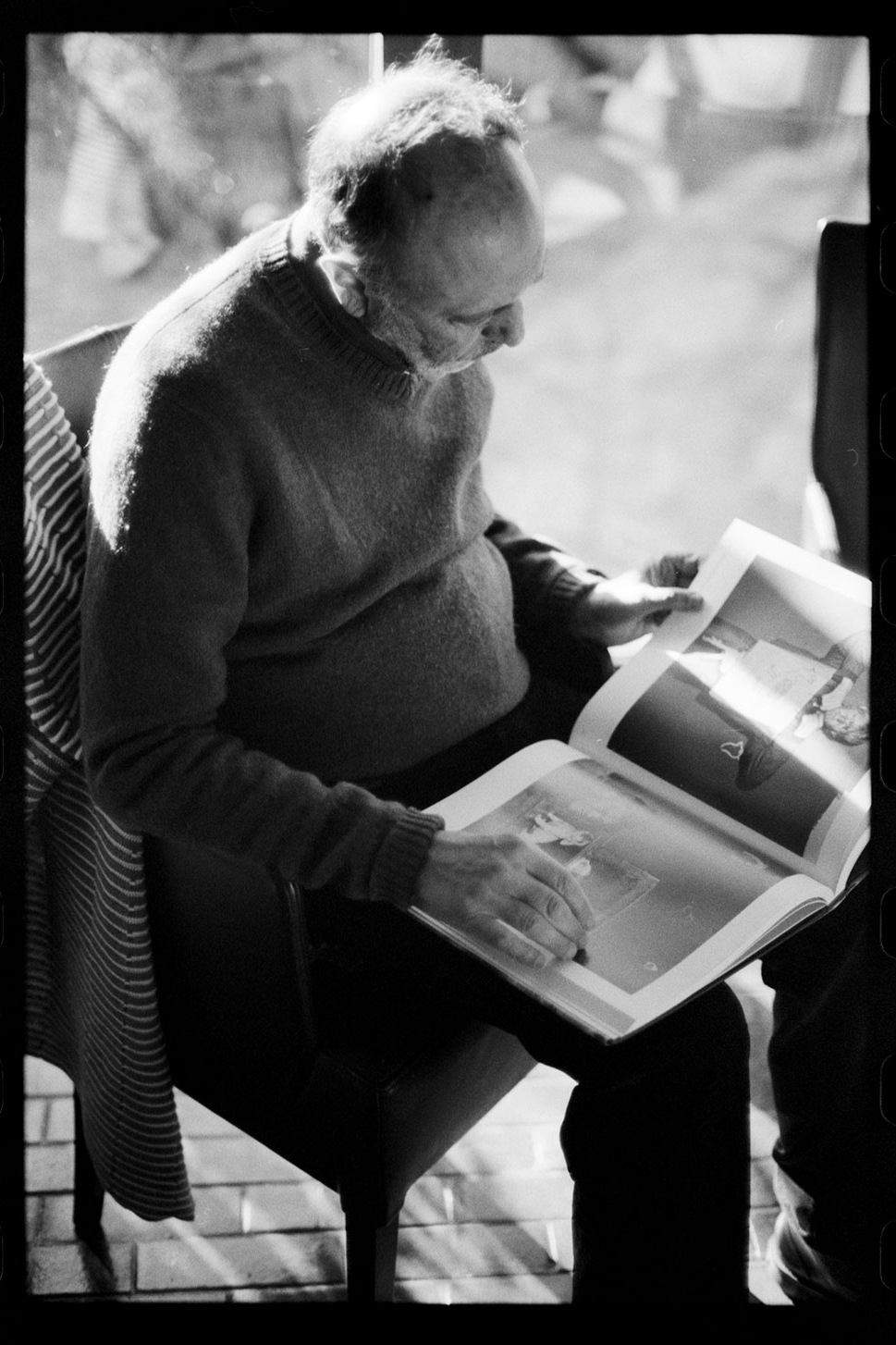
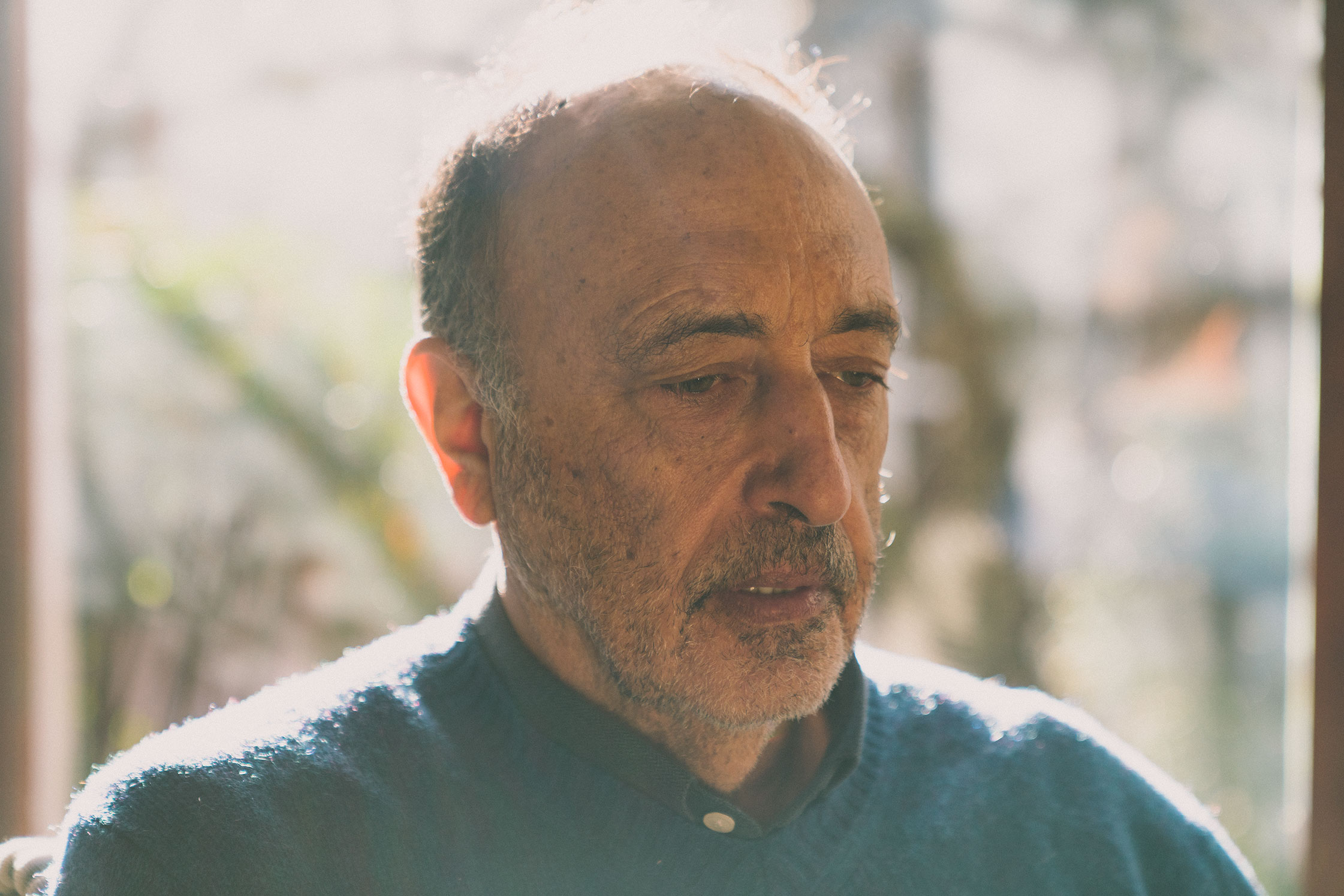
-
What sparked your interest in photography?
My mother catalyzed my interest in photography. She worked with Magnum and started a photo gallery in the 1960s with people like Kertesz and Cartier-Bresson, so we always had photobooks and photos everywhere throughout the house. When I graduated from high school in 1968, she gave me a Nikon FTN, and I remember feeling exalted because I could go out and try to take “serious” pictures because I finally had a “good” camera. Because of my mother, I feel like I’ve always understood the nature of an artistic, expressive image that goes beyond the everyday and mundane.
-
Throughout your career, you have visualized glitches and moments that aren’t drawn from a static reality and have unlocked pockets of the mind that are hard enough to recreate with malleable mediums like painting or sculpture. How did you first start manifesting these strange worlds?
It definitely evolved gradually, but I was always interested in creating photographs about psychological expression [Ballen studied psychology and geology]. Photography has always been a means to the psyche, and a means of finding myself and going below the surface to try and find what you call “hidden pockets.” It’s something that’s been inherent to my personality since my teenage days. As you get older, you’re able to express more complexity in your work. At 21 or 22, I didn’t have the same depth of understanding about certain aspects of my life, or of the human condition. Gradually, I started to transform reality—whatever that means—into a particular form that could only be seen as my own reality, coming from my own mind. It took some time to get there, but by 1997, it started becoming clear that I was able to transform the world as I saw it with a camera, in a way that was unique to me.
-
When you are creating and capturing these worlds, where does your mind go? Are you constructing these sets in the moment? How much planning is involved?
I like to think of myself as having a silent mind, so I don’t think much about what I am going to do. As I work myself through a photograph, a lot of the decisions I make are intuitive—but they are still decisions. There is no point in second-guessing how these pieces of the puzzle fit together until you actually try to put them together. When you put them together, their bonds break into a secondary transformation that you build on again. But you cannot foresee the transformation until it is happening, and sometimes it just doesn’t happen at all. I go in with a very relaxed mind, and I’m not very tense about things. I just begin to work and find that crack in the door. I don’t really second guess my own mind—it has its own procedures.
“The picture has to have the ability to worm itself into someone’s mind in microseconds.”
-
Your experiential process also includes other mediums like drawing, painting and sculpture. But the foundation of your work is always that final image. What anchors you to your lens?
It’s true. The core of what I’ve done over the years has been photography, and I really understand the medium. For me, photography isn’t about setting something up, taking a picture and then explaining it to everybody. The picture has to have the ability to worm itself into someone’s mind in microseconds, affecting that person’s state of being. The essence of believability and authenticity—having that impact on the subconscious mind, whatever that is—is the most important thing you can do.
I can create installations with drawings, paintings, sculptures, and building materials—and that might be a great success—but it doesn’t mean that those things are photographable in a powerful way. Because the photograph is dealing with the instant and present, it’s dealing with something that the brain sees as unrepeatable. I have always said that this is the most important concept in photography, because that is the most difficult thing to achieve: an authentic moment that the mind hasn’t come to terms with yet. That’s when a photograph has an impact. Anyone can create an image of a child blowing out birthday candles, but that is an image that the mind is already used to. Without taking into account the photographic element, the things that I paint, draw, or build just wouldn’t have as much power in them. They need that final act of capturing authenticity.
-
The chaos within your images often trigger discomfort. When you are creating work in these chaotic realms, how do you feel personally? You said that you don’t like to second-guess your own mind, but do you feel settled in the chaos you create?
I wonder why people feel so uneasy about chaos, because you don’t know what’s going to happen in the next second, you don’t know when you are going to get sick, and you don’t know what’s going to happen to the people you love. To tell you the truth, you don’t know about anything—the future is uncertain. When people can’t deal with this problem, they break down, and they try and do whatever they can to order things in an artificial way, whether that’s cleaning their house or driving a pretty car. They do all these things to avoid the inevitable truth that some way or another, things have to go wrong. Somewhere along the line, you die. That’s the most profound concept in the human condition: that the mind knows it’s going to die, and it’s trying to run away from that fact. So, you ask me if I mind chaos, and the answer is: I don’t mind it, because it creates the ability to come to terms with myself. I’m not scared to be reminded, and that’s why I can take the pictures I take. I confront these things without getting anxious about them.
-
We are agitated by your images because we are familiar with the darkness you display in them.
And for those uncomfortable people, it’s a sign of psychological weakness—they haven’t integrated their identity. What do they do when they watch television and see all these awful things going on in the world, day and night, for their entire lives? They don’t respond, or they respond in the way that they are told they should respond. My images are “pictures of the mind,” and they have a psychological edge to them. They make people’s subconscious mind question the nature of their being in some funny way, and that makes them uneasy.
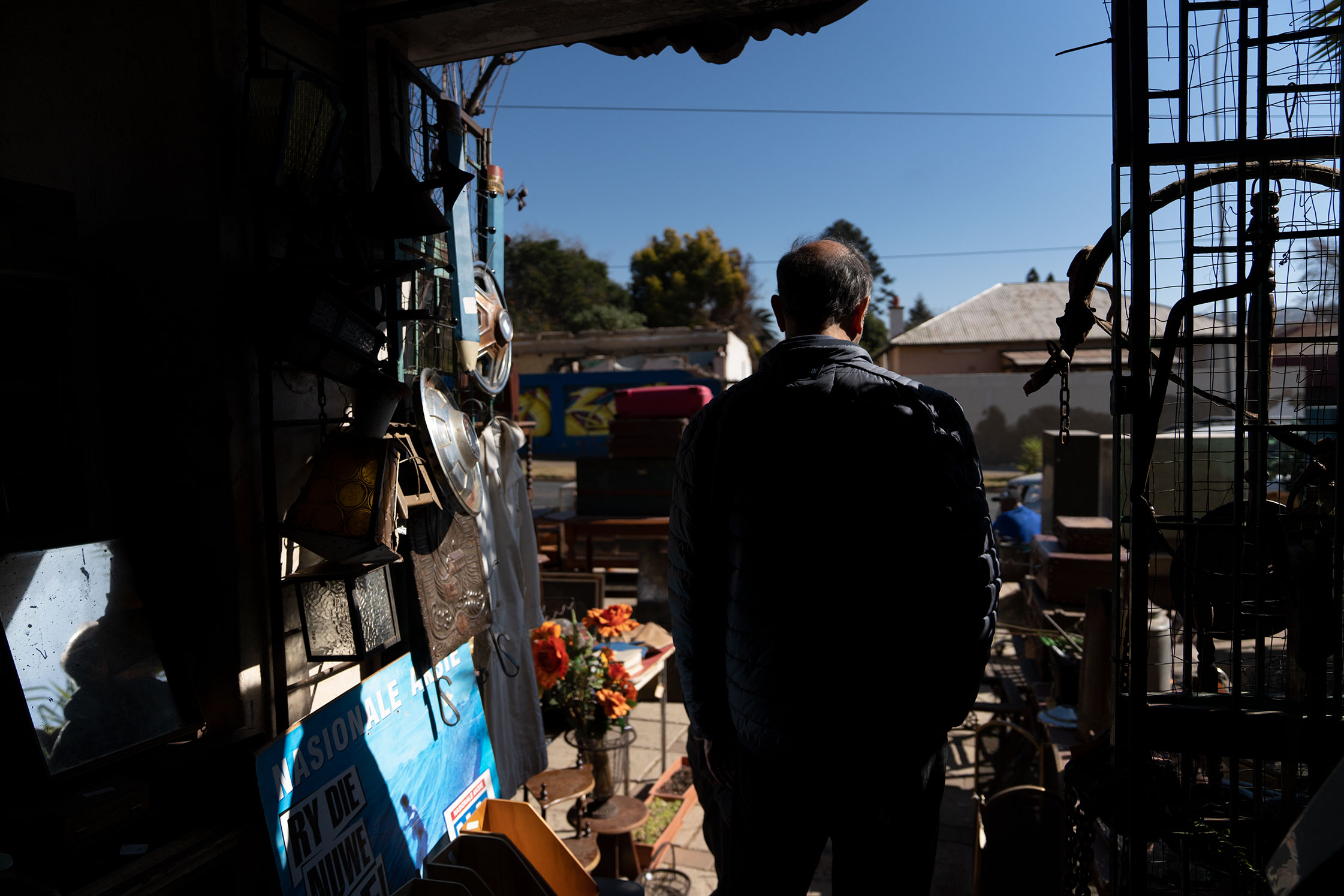
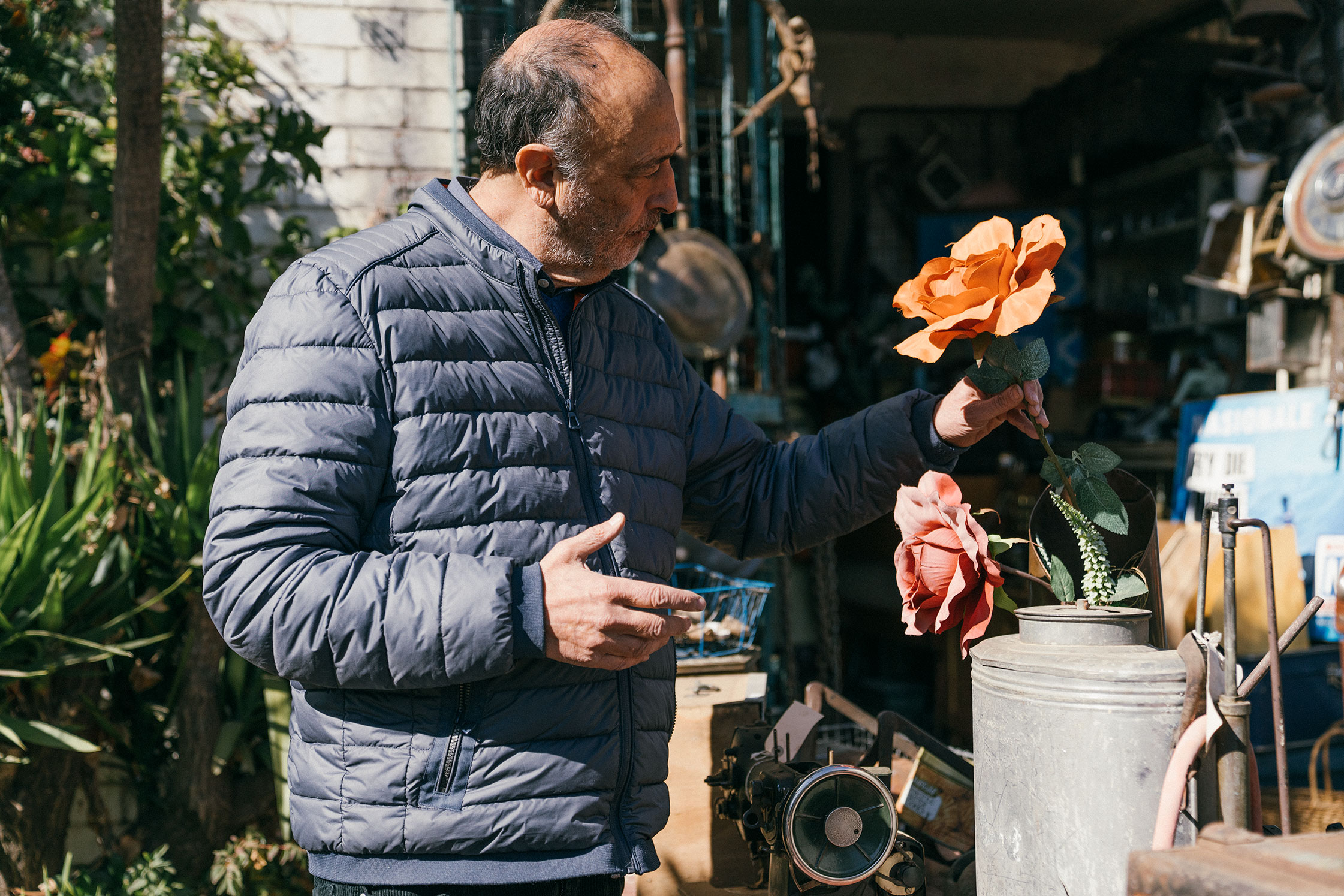
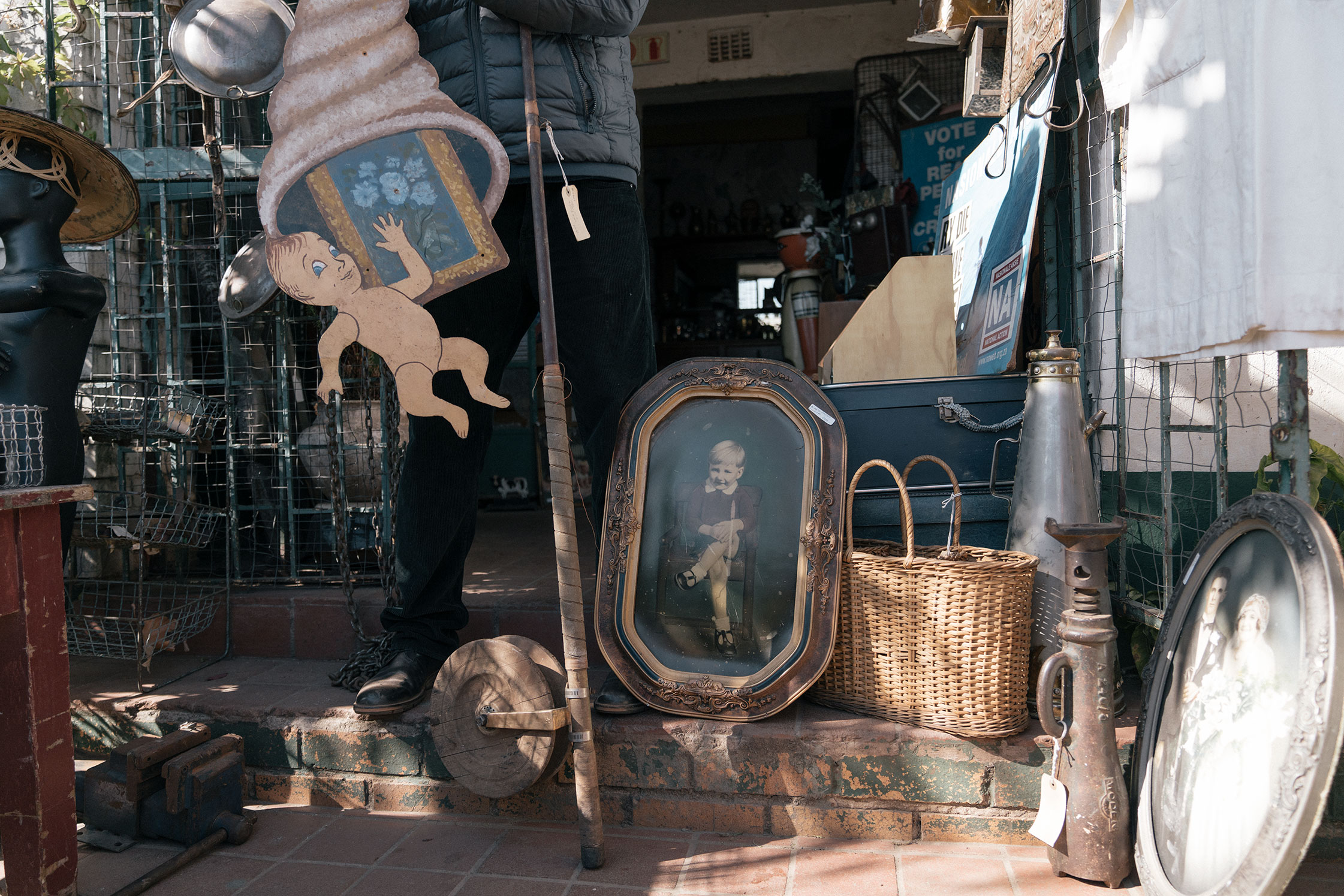
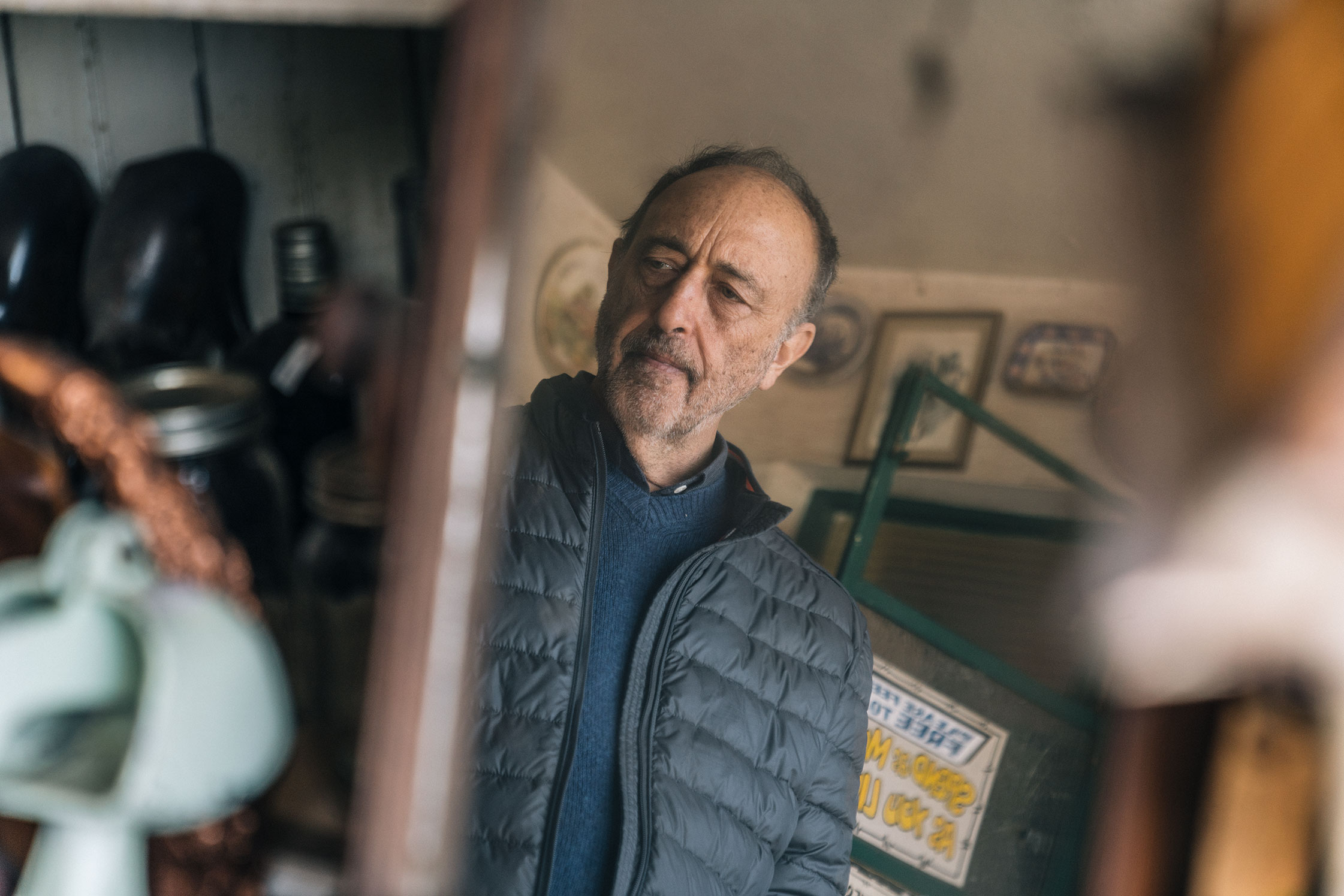
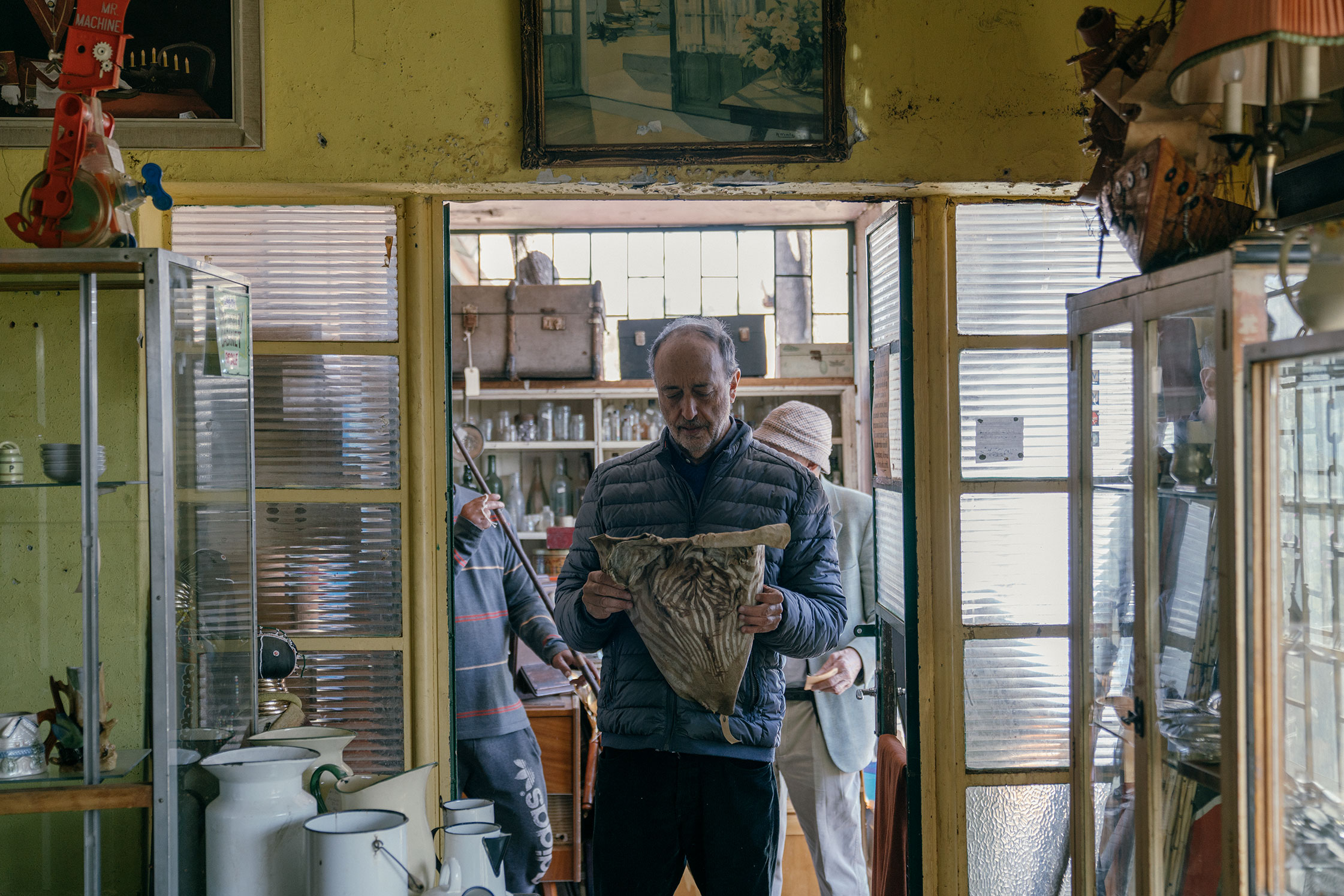
“It’s a difficult world to put your finger on because it’s very visual, and it contains a number of enigmatic and sometimes contradictory metaphors.”
-
From about 2002 onwards, there were fewer human faces in your projects, and I think this directly contributes to the turmoil we’re discussing. People are often trained to read photographs through faces, to better understand what’s going on in an image. But when viewers see your chaotic scenes, where there is no clear reading on what a body or face is saying, it freaks them out.
I put faces in my pictures for however many decades, and then I moved on. The faces became drawings, the faces became animals, and they also became other things. I was able to create a reality that was devoid of faces, but still capable of presenting a powerfully coherent aesthetic that avoided the problem of questioning my subjects: Who are these people? Are they rich? Are they poor? Are they black? Are they white? Are they male or female? People distract themselves with these interrogations, and they avoid getting to the point—they avoid tapping into their inner anxiety. It’s a difficult world to put your finger on because it’s very visual, and it contains a number of enigmatic and sometimes contradictory metaphors.
-
It’s a difficult world to put your finger on, but it’s also a difficult world to confront. Even if your work is challenging to read in a literal sense, a major reason for why people don’t want to engage with it is because it feels familiar.
That’s the key. Because if it’s familiar, it’s archetypal. And if it’s archetypal, then you hit something, and that’s when the mind understands it.
-
If your final image is meant to be impactful and transport your viewer into a certain mindset, how do you then ensure that this translates to an exhibition experience?
Usually, people at a museum tell me what they want, and we choose images around a particular subject. Sometimes the subject is very clear, like pictures from a specific series, and sometimes it’s more poetic. I like the people who are making the exhibition to choose the pictures, because then it’s their exhibition that they can take pride and interest in, but I will never exhibit an image that I don’t feel reaches a certain standard.
-
How do you approach bringing your work together in a book? What are the things you pay the most attention to?
I usually spend about five years making a book. It’s something I feel intrinsically. I know when I reach that peak of completion. I just get this feeling that I have finished it, and that I need to move on to other things. It’s a very complex medium, and there are no simple formulas for getting better at it. It mostly requires hard work and discipline.
-
What do you want your audience to take away from the worlds you create?
I just hope that the pictures do something positive for people, helping them come to terms with their own identity in some way. I don’t know how that might happen, or why. I can’t say any more than that. Everybody’s got a different brain—I don’t know their level of perception, or what their life experience has been, or what their expectations are. I think any artist would say the same thing. It might be one little thing in one picture out of a hundred that they walk out with and remember, or every single picture might impact them. That’s life. For me, it’s a great privilege to hear that people remember my pictures. For an artist, that is a real compliment; if your work gets in someone’s head and stays there, then it really meant something.
Roger Ballen is an American photographer based in Johannesburg. Spanning over 40 years, his seminal work has established him as one of the most influential and important photographic artists of the 21st century. As Ballen explores the deeper recesses of his own mind, his strange and extreme works confront the viewer and challenge them to come with him on a journey into their own minds.
This profile is part of Visually Speaking, our four-part content series with photography platform Unseen. The series delves into the personal histories of four established photographers, exploring their creative practices and socio-political contexts.
Text: Cat Lachowskyj
Photography: Justice Mukheli
Video: Borbala Szelei and Alexander Brand
Special thanks to Reflex Gallery Amsterdam
